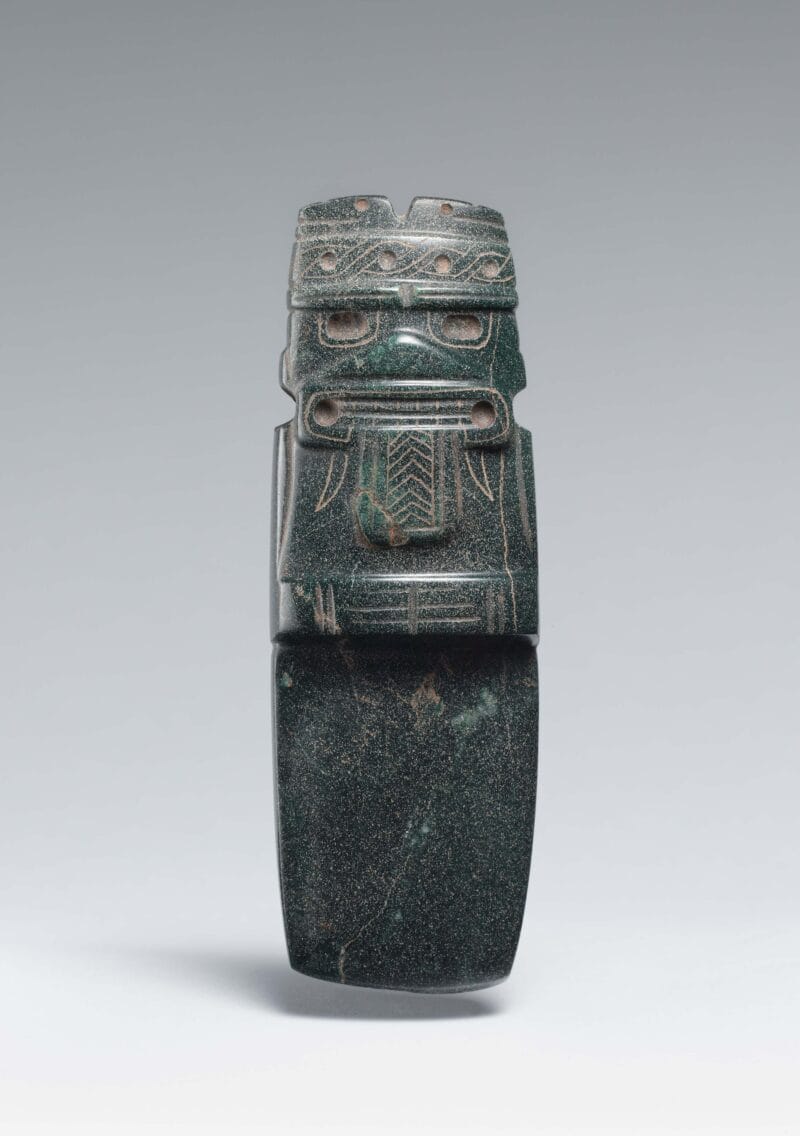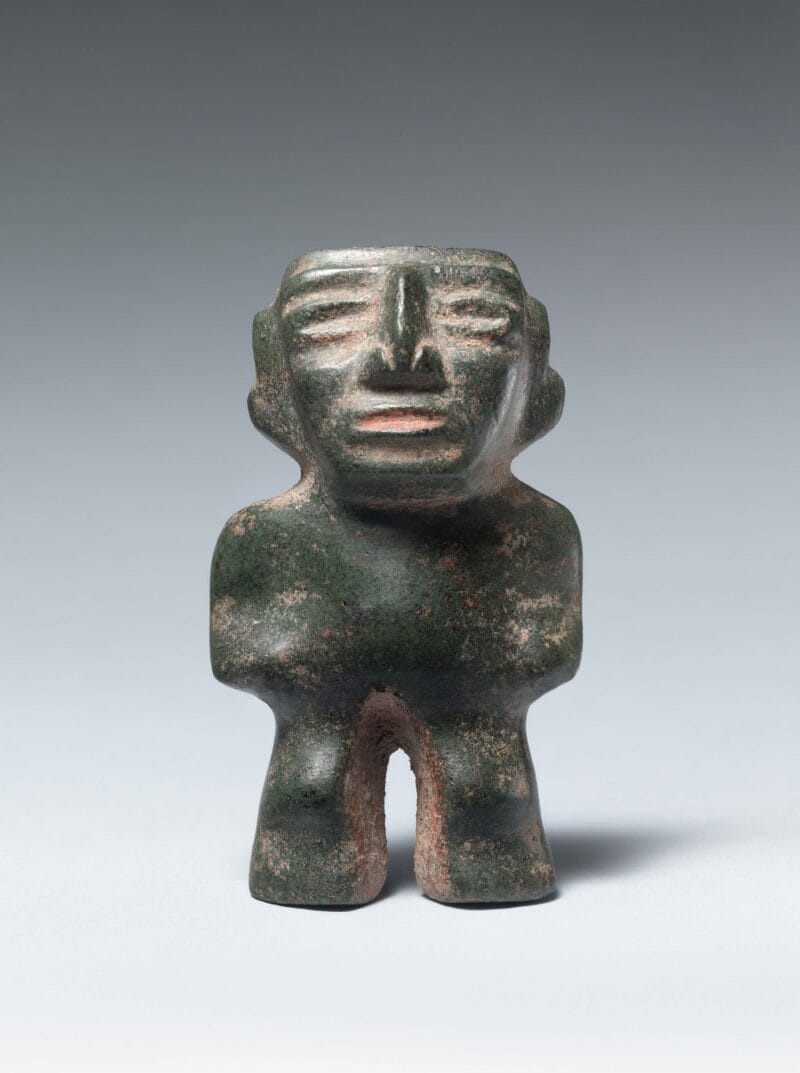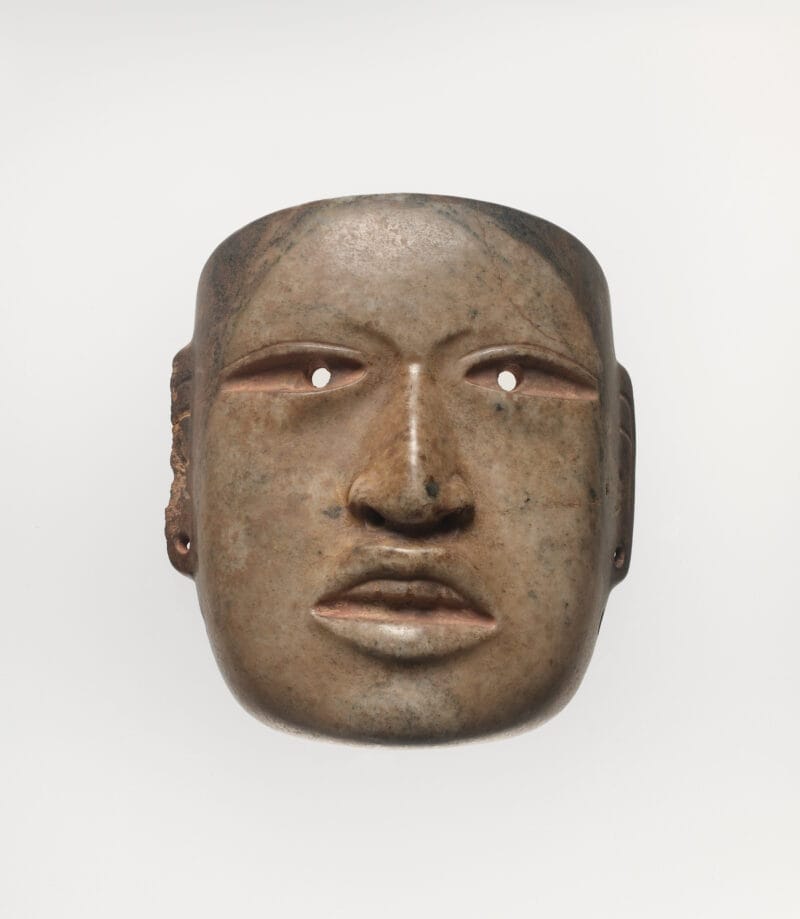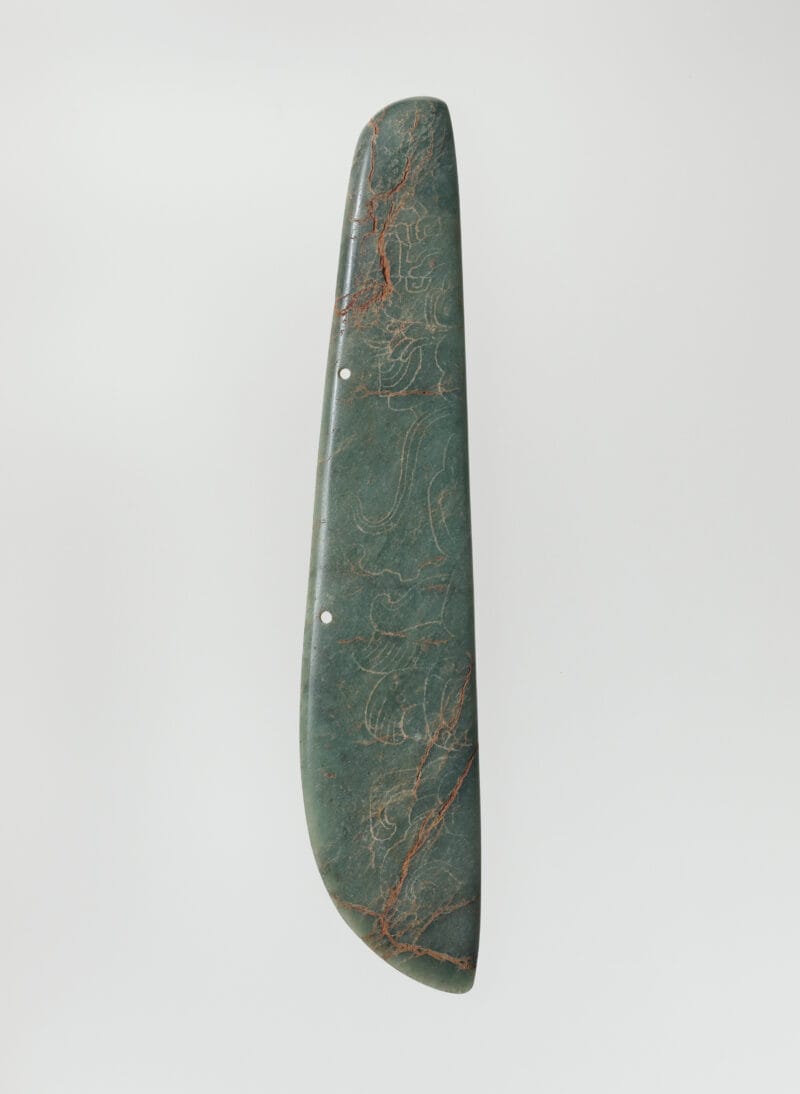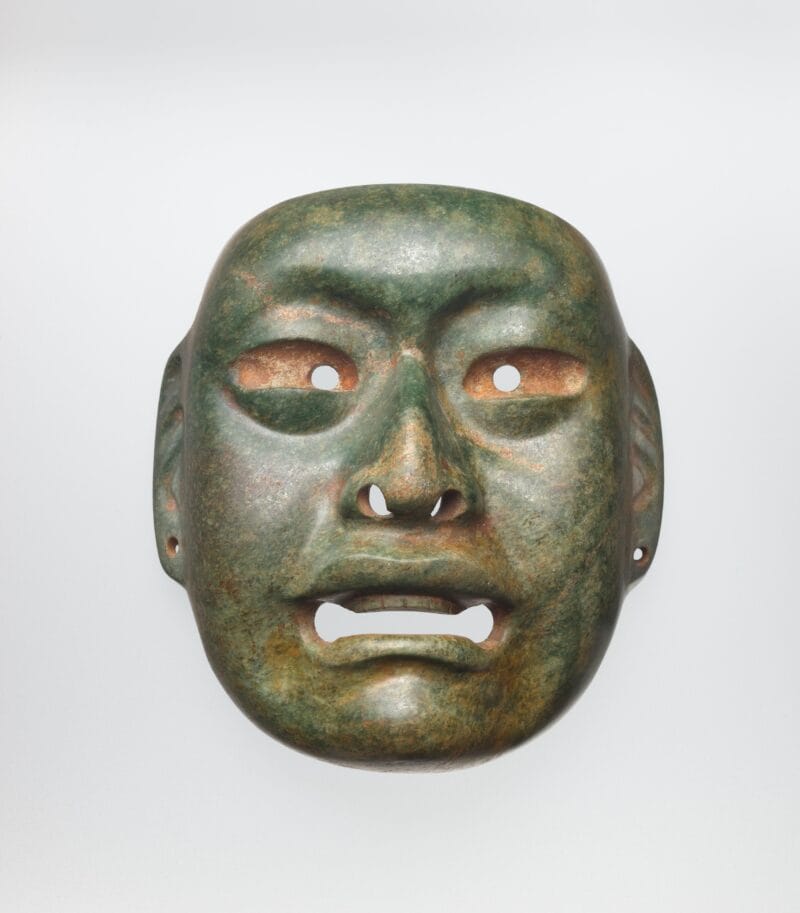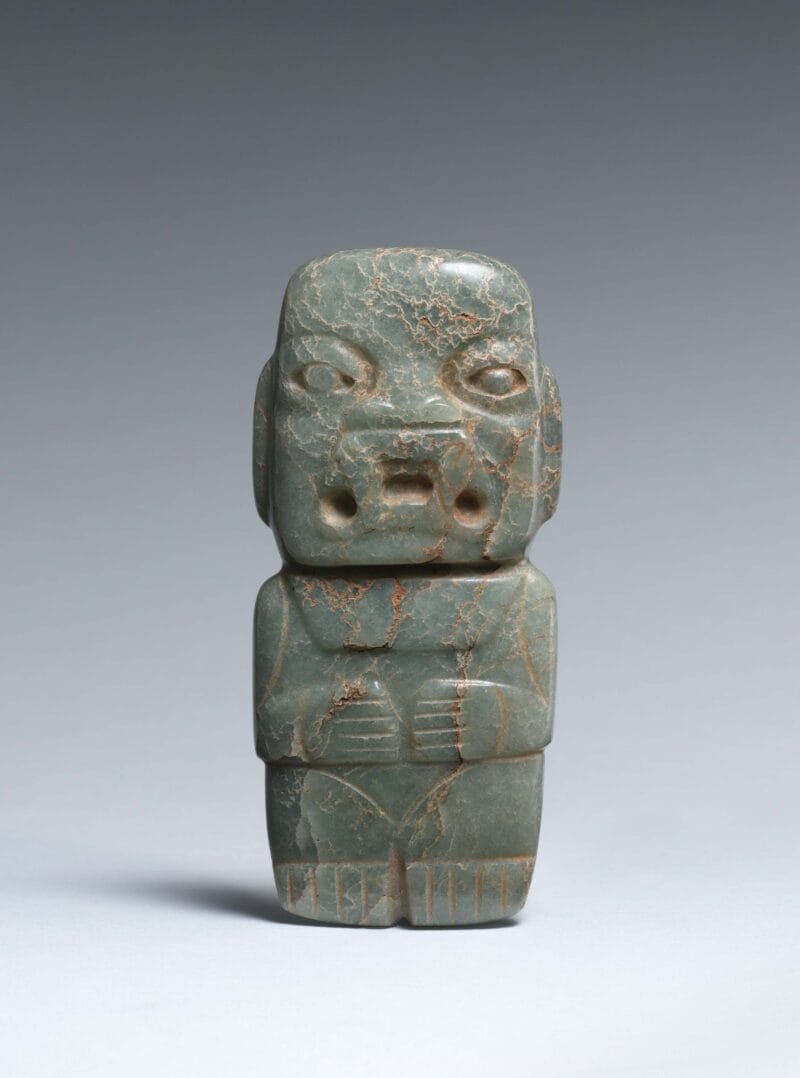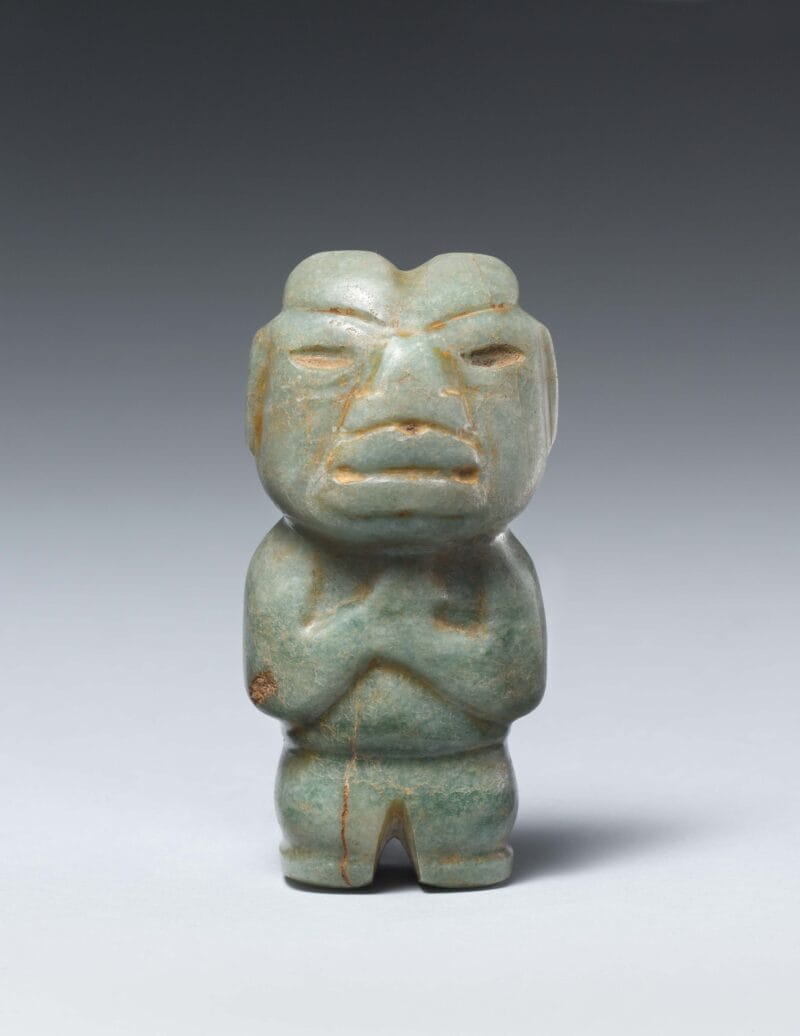
About the Object
The standing male figure seen here is especially notable for its stylized geometric facial features and because the figure holds an object (likely a celt, or hand axe). The cleft separating the figure’s two legs is quite deep, touching the figure’s abdominal area, while the figure’s almond-shaped eyes and overall rounded body parts all convey a naturalistic depiction. Scholars suggest that celts were occasionally used in the clearing of the land for agriculture, as weapons, or in various rituals. This figure holding a jadeite celt therefore strongly conveys symbols of fertility, rainfall, and perhaps human sacrifice.
Additional Information
The Olmec culture, which developed a distinctive style since the second millennium BCE, prospered in areas across the contemporary Mexican states of Veracruz and Tabasco from around 1400–400 BCE. Considered by many scholars to be among the earliest Indigenous civilizations in the New World, the Olmec are often referred to as the “mother culture” of Mesoamerica. While this is still hotly debated by archaeologists, art historians, and others, the Olmec greatly influenced later cultures throughout Mesoamerica and beyond, including the Maya, Teotihuacan, and Aztecs (Mexica) through their iconography, rituals, beliefs, and architectural styles.
[Throckmorton Fine Art, New York, NY];
The Jan T. and Marica Vilcek Collection, 2002-2010;
Gift to The Vilcek Foundation, 2010;
Related Objects
You may also be interested in
Juan Pablo Contreras composes classical music with the sounds of Mexico
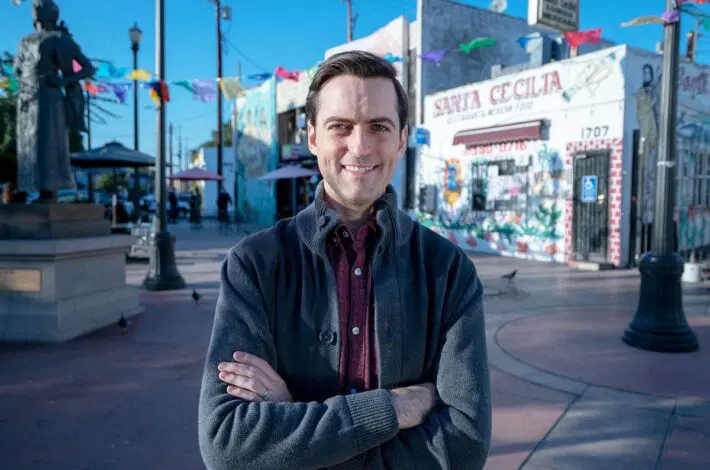
Rodrigo Prieto: “Being a foreigner gives you a certain perspective”
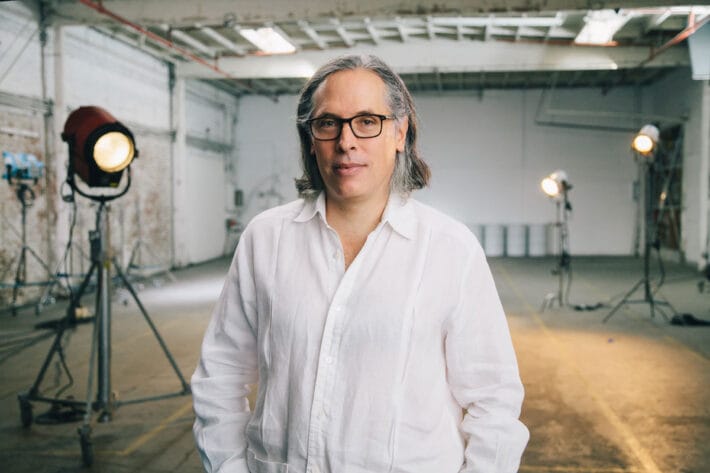
Juan Pablo Contreras




